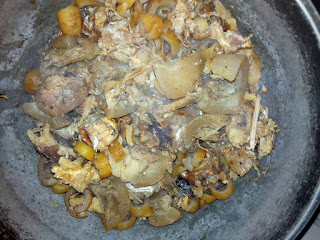HOW TO KNOW A RIPE AND SWEET WATERMELON

Have you ever bought Watermelon, only to discover that it's not ripe or sweet? It can really be, not only disappointing, but also effort and money wasting! This sometimes makes one wonder how to identify a ripe one. On most occasions, you just have to cede your right of judgement to the vendor who makes a choice for you - unlucky you, if you meet a mischievous one! Check out for any or all of the following tips and such woe will never betide you again! 1. SOUND CHECK I'm sure you have severally seen the mallams (vendors) giving the watermelon some slaps/tap, you just might not know what they are checking for! Ripe watermelon when tapped/thumped gives a HOLLOW sound. If the sound is deep/thick, it means the subject is not ripe. So, you might want to do some knock knock knock when next you are buying! 2. BELLY (FIELD SPOT) CHECK Field spot is simply the side upon which the watermelon rested while growing till maturity/harvested. A ripe watermelon has a creamy y



